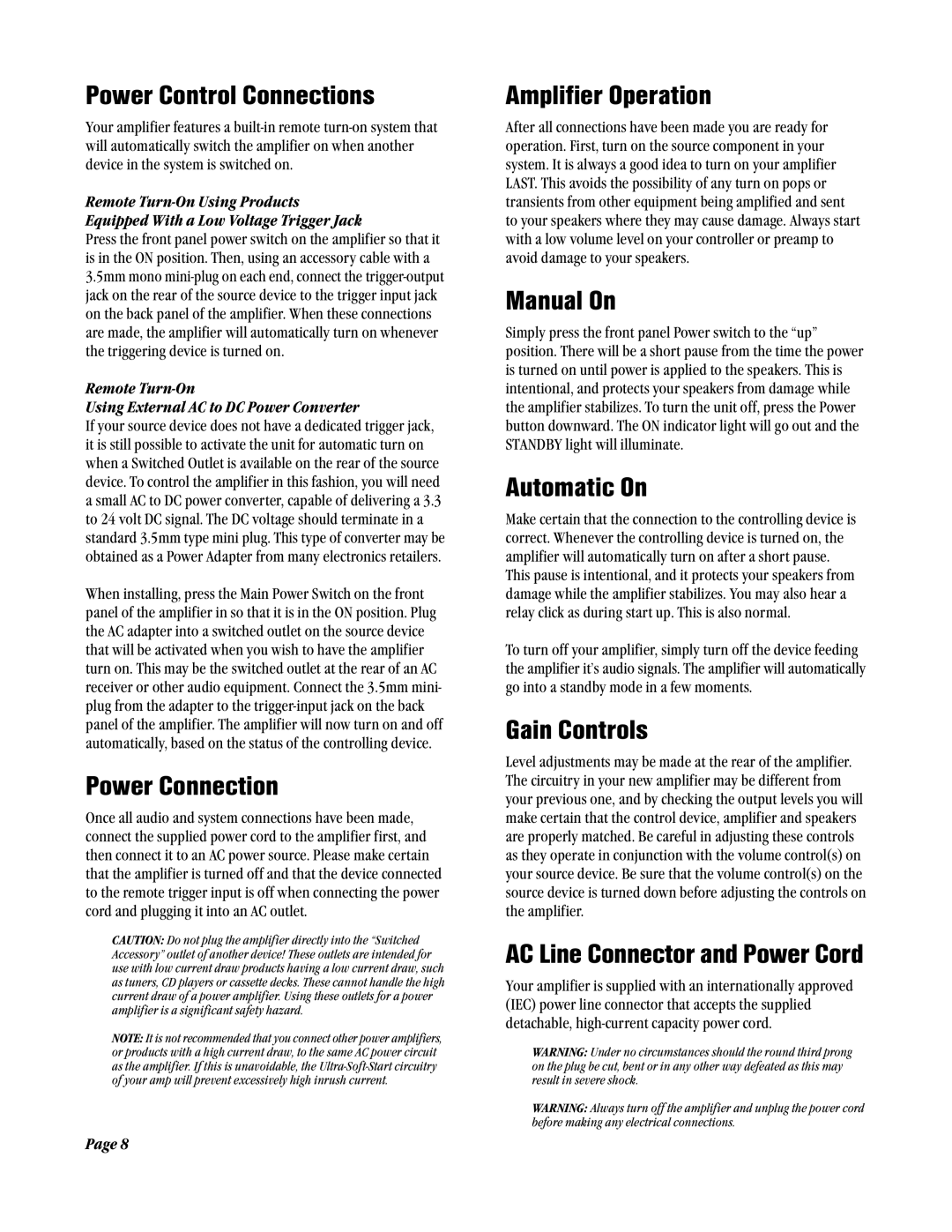AT1202, AT602 specifications
The Amplifier Tech AT1202 and AT602 are powerful audio amplification solutions that cater to both professional and home audio enthusiasts. Known for their cutting-edge technology and robust performance, these amplifiers stand out in the crowded marketplace of audio equipment.The AT1202 is a high-performance amplifier delivering a staggering 1200 watts of power at 4 ohms. It is engineered to drive large speakers with ease, making it ideal for live sound applications and large venues. One of its notable features is its advanced thermal protection system, which prevents overheating during extended use, ensuring reliability even in demanding environments. Additionally, it incorporates a high-efficiency Class D architecture, providing exceptional power handling with minimized distortion, resulting in crystal clear sound.
The AT602, on the other hand, offers a more compact solution with 600 watts of power at 4 ohms. This amplifier is perfect for smaller setups, such as home theaters or studios, where space is at a premium without compromising audio quality. It features a full-range capability and an auto-sensing input that automatically detects the presence of a signal, eliminating the need for manual switching. The AT602 also includes an adjustable crossover, allowing users to tailor the frequency response to their specific audio requirements.
Both models are equipped with advanced digital signal processing (DSP) technology, which enhances audio quality by minimizing noise and optimizing performance. This technology allows for various configurations and presets, ensuring that users can achieve the best sound possible for their environment.
In terms of connectivity, the AT series amplifiers come with multiple inputs and outputs, including XLR, RCA, and speakON connectors, making them incredibly versatile for different audio setups. Their rugged construction and lightweight design make them easy to transport, while their sleek appearance fits well in both professional and home environments.
In summary, the Amplifier Tech AT1202 and AT602 are exceptional amplifiers that deliver high power and superior audio fidelity. Their combination of advanced technology, user-friendly features, and durable design makes them suitable for a wide range of applications, ensuring that audio enthusiasts receive quality performance whenever they need it. Whether in a professional audio setting or a personal listening space, these amplifiers are sure to impress with their reliability and sound quality.
